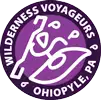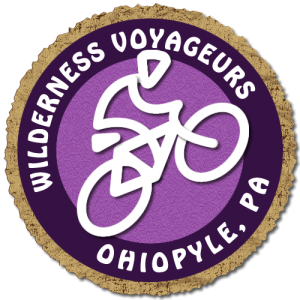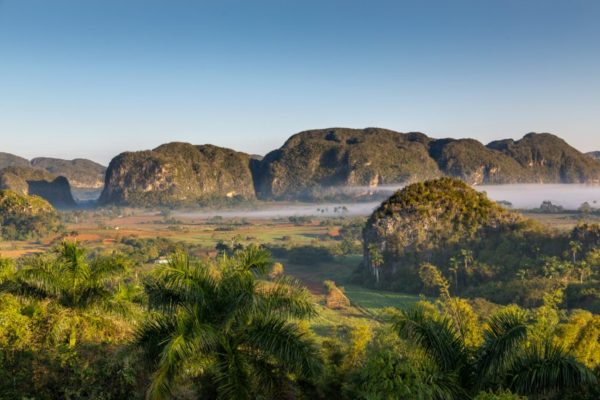
Cycling in Cuba’s Natural Landscape
When people think of Cuba, they envision bustling Spanish-style cities, cigar shops, classic cars, and beaches with clear blue water. With all these other attractions, it’s easy to forget about the Cuban natural environment. On parts of our Cuba Clásico Bike Tour and Quintessential West Cuba Bike Tour, we visit some of Cuba’s natural landmarks and learn about the island’s biodiversity.
The main island, named Cuba, is 780 miles long, constituting most of the nation’s land area. It’s the largest island in the Caribbean and 17th-largest island in the world by land area. Cuba consists mostly of flat to rolling plains, apart from the Sierra Maestra mountains in the southeast, whose highest point is Pico Turquino at 6476 feet above sea level.
Birds of Cuba
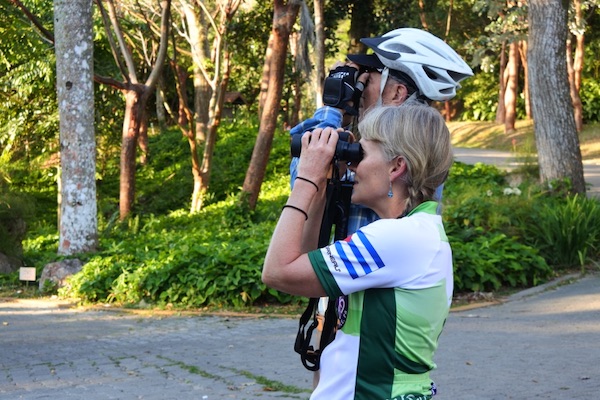
Birdwatching in Cuba
In total, Cuba is home to some 370 bird species of which 30 hold vulnerable to critically endangered status. Cuba provides key wintering habitats for 284 species of migratory birds that breed on the North American continent.
The island has 28 species that are endemic – native to Cuba and found nowhere else. There are 11 species considered near endemic – residing primarily in Cuba but also on nearby islands. Two species could become endemic as a result of species reclassification. This site introduces you to these 41 special birds.
One of our favorite birds in Cuba is the Bee Hummingbird, the smallest of all warm blooded animals. Cubans call it a zunzún or zunzuncito. It weighs 1.8 grams (less than a dime). Its wings beat 80 times per second, and up to 200 times per second during courtship displays. Its heart rate is the second fastest of all animals, and it has the fewest feathers of all birds!
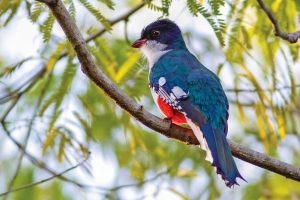
The Cuban Trogon, Cuba’s national bird.
Keep an eye out for native wildlife on the Quintessential Cuba tour when we visit Las Terrazas, an UNESCO protected biosphere originally created as part of Castro’s 1968 reforestation proposal. The region had been over-logged since the days of Spanish conquistadors and coffee plantations. Now, it’s a verdant haven for birds. A local guide will walk us through the community while discussing the history, pointing out birds and local plants.
On 2018’s Quintessential Cuba West tour, one guest was delighted to observe several interesting birds:
- Crested Caracara
- West Indian woodpecker
- La Sagra’s flycatcher
- Cuban trogon (national bird!)
- Groove-billed ani
- Cuban emerald hummingbird
- Western stripe-headed tanager
- Yellow-bellied sapsucker
- Cuban grassquit
- White-crowned pigeon
- Red-legged thrush
- Kestrel Hawk
- Many Florida-type waders
Fish of Cuba
With over 900 different species of fish—22 of which are endemic freshwater species—near Cuba and the archipelago, it’s not surprising that Cuba tends to attract a lot of naturalists as well as game fishers. Ernest Hemingway, for one, was an avid game fisher and took advantage of the Cuban water’s diverse fish life. In fact, Hemingway’s The Old Man and the Sea was inspired by the author’s time spent living on the island.
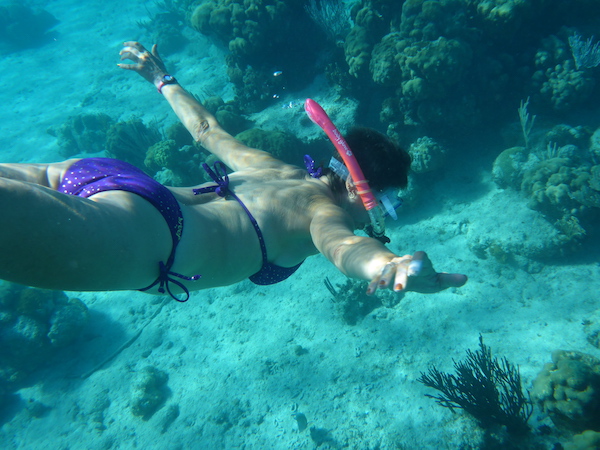
Snorkeling at Playa Giron
In the warm water around Cuba, you’ll find clown fish, angelfish, tangs, groupers, and countless others coloring the blue waters or traversing the labyrinthine bright coral reefs – some of the healthiest reefs in the world. Turtles swim near the surface alongside dolphins while flying fish flit above the water.
On our Cuba Clásico bike tour, we have an opportunity to snorkel in what we know in the U.S. as the Bay of Pigs. Look out for fish and corals!
Reptiles in Cuba
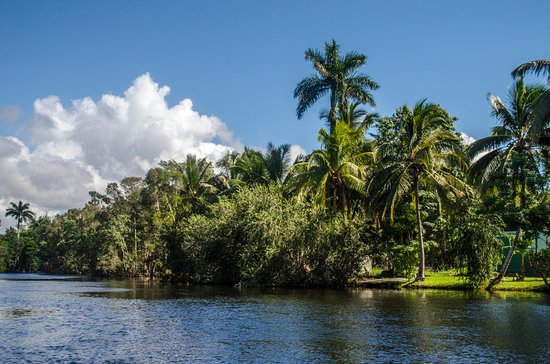
Zapata National Park
Cuba has over 136 species of reptiles, and about 80% of them are endemic. Over half of the reptiles, about 90 species, are actually lizards. The Cuban crocodile could once be found roaming Cuba, but they can now only be found in the Zapata Swamp. In fact, they now hold the distinction of being the most endangered species of the New World crocodiles. The endangered crocodiles tend to lose their genetic identity due to interbreeding with American crocodiles. The most prominent reptile on the island is the Cuban rock iguana, which can grow up to 5 feet long!
On our Cuba Clásico tour, we have an interpretive speaker from Zapata Swamp National Park. Zapata has an extensive ecosystem of mangrove forests, keys, seagrass beds, coral reef barriers and deep reefs. It is the only place you will find both the Cuban Crocodile and the American Crocodile.
Cuban Mammals
Cuba doesn’t have many native mammals. The warm-blooded creatures that live there now, like dogs, donkeys, and horses, were all introduced by Spanish settlers.
One of the largest native mammals the Cuba is the West Indian manatee. These wrinkled, whiskered “sea cows” glide along in shallow estuaries, bays, canals, and coastal areas. The West Indian manatee is native to Cuba, Puerto Rico, Hispaniola, and Jamaica. Manatees enjoy the warm waters of the Caribbean because they have little insulating body fat and very low metabolisms.
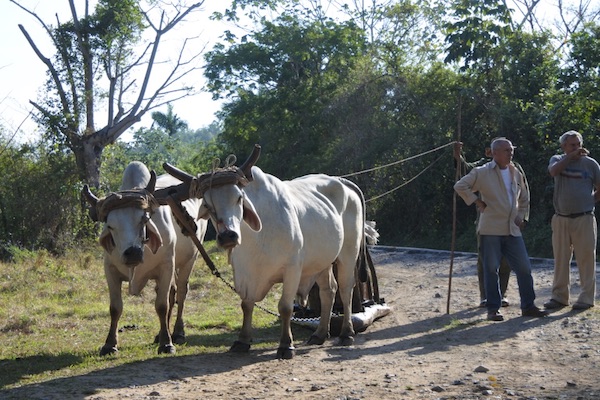
Two non-native, but very common, mammals of Cuba.
The largest land animal native to Cuba is the hutia, a big rodent that lives in trees. Research suggests that this ancient mammal might have survived and thrived in part because they have no competition from other large mammals on the island. (Most hutia species in the Caribbean are extinct today.) Unlike many of Cuba’s endemic species, these critters are actually becoming so plentiful that many farmers consider them pests. Hutia is also part of the traditional Cuban diet, and one dish serves hutia stewed with nuts and honey.
Cuba is also home to one of the world’s smallest bat, the butterfly bat. With a wingspan of only five inches and weighing less than an ounce, these tiny mammals tend to inhabit the moist caves near Baracoa.
Cuban Geology

The breathtaking Viñales Valley.
One of the most unique landscapes we cycle through on our Quintessential Cuba tour is the World Heritage Center of Viñales Valley. The Viñales is notable for its striking landscape, with the rounded limestone Mogotes formations rising abruptly from the valley’s flat plain. The Mogotes have labyrinths of caves secreted away in cragged overhangs.
On the Cuba Clásico tour, one of our rides climbs through rolling farmlands with the verdant Escambray Mountains as a backdrop.
Wilderness Voyageurs operates Inn-to-Inn Bicycle Vacations
All Wilderness Voyageurs tours are fully supported with a SAG vehicle and include beautiful routes through stunning landscapes, excellent food and accommodations, top rate equipment, dedicated and enthusiastic guides.
Give our wonderful reservation staff a call to book your next bike tour vacation. (800) 272 – 4141
